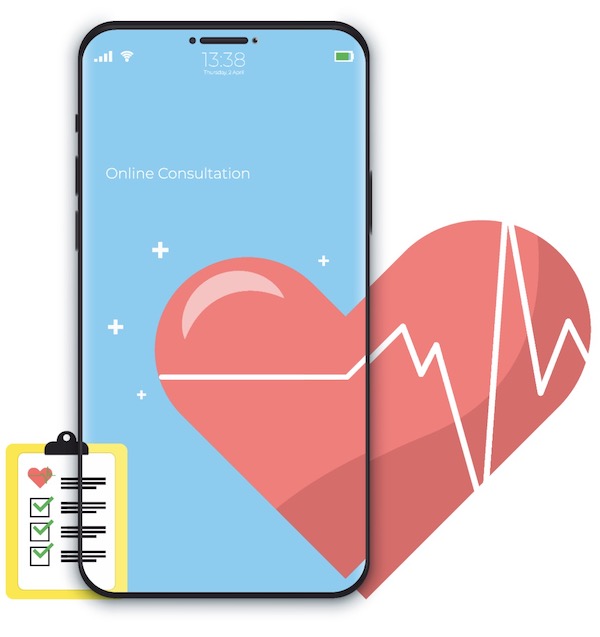
With the use of computers and smart phones, it has now become possible to have a consultation with your physicians, out of their offices, for a chronic or many non-emergency health issues. Indeed, due to the corona virus pandemic and its social distancing policy, telemedicine is now just steps away from becoming a “new norm” in these treatments. With video chats sufficing, Americans, including more and more senior-aged citizens, are now engaging in videoconferencing. Virtual care, with its use of computer software, has become a necessary option to so many individuals still remaining under quarantine status, at least part of the time. How does this “office type” visit actually benefit the patient? Remotely meeting with a doctor limits a patient’s exposure to our world-spread pathogen.
Allison Gatlin’s Investor’s Business Daily (IBD) article (week of June 22, 2020) on this topic informs us “…telehealth frees up doctors to physically meet with other patients with illnesses that require in-person diagnosis or treatment.” This becomes a critical need for the health professional, now more than ever, who can then balance acute illnesses versus chronic ones. Gatlin states “The fast adoption of telehealth has changed how physicians manage chronic conditions, such as diabetes, cardiovascular issues, or mental health disorders.” In talking to his/her client, for example, the practitioner can glean info on the diabetic’s sugar count, where insulin not being properly regulated, can lead to other body disorders. Cardiovascular patients can be asked about their blood pressure readings, and then given proper meds to ward off possible future heart attacks. Those struggling with behavioral health problems can receive psychiatric correction for their medicines and, where appropriate, psychological counseling.
A multitude of recent surveys revealed these astonishing statistics. Over the period from January through April, 2020:
1. Interest in the actual computer word search for “telemedicine” had risen 525%.
2. The number of active telehealth users had tripled in number.
3. Fifty-one percent of U.S. consumers, age 25 and older, were found to have used a telemedicine company’s service.
4. Fifty-two percent had accessed these same companies for the first time during the pandemic.
5. Furthermore, more than 9 in 10 responders said they were quite happy with the virtual experience and would use it again.
Gatlin concludes with this information:
“Congress spurred telemedicine with its $2 trillion stimulus package in March. Under the CARES Act, medical groups could access $200 million dollars to install technology needed for virtual doctor visits.”
At this same time, Medicare and Medicaid services were reducing restrictions on telemedicine companies and physicians using their services. Beginning March 1, Medicare actually began paying these doctors at the same rate as in-office visits. States have also eased up on licensing restrictions, allowing physicians from one state to quickly obtain out-of-state licenses. This practice has aided states in high-count Covid-19 regions to get the necessary medical help so desperately required there.




